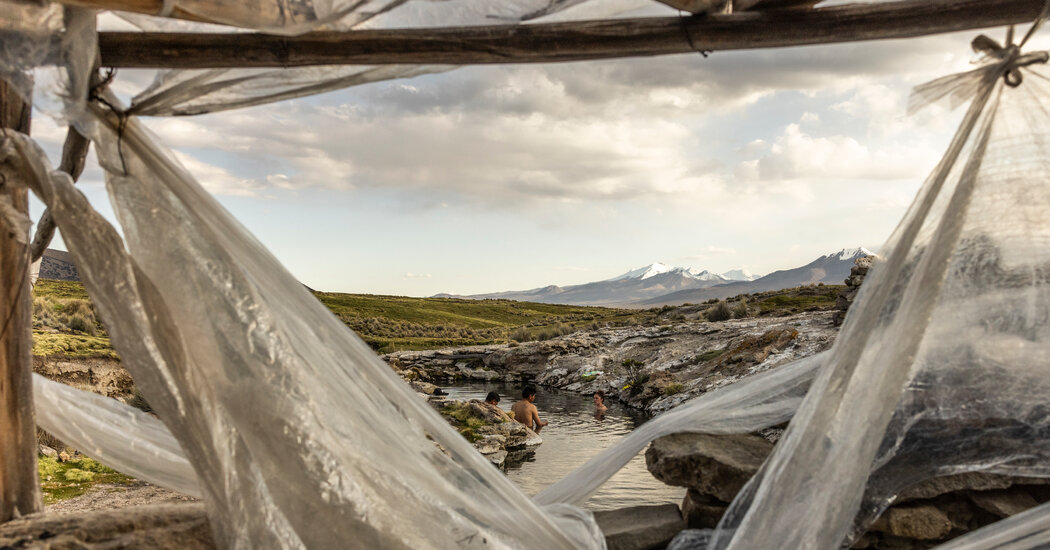
Some hot springs look like palaces, others like holes in the ground. Some feel like parties, others like prayers. There are hot baths within cities, on remote islands, in the desert, inside thick forests. Thermal water can be green, orange, blue, yellow or turquoise. It can be milky and opaque, silty with sediment or as clear as a municipal pool. Sometimes it’s barely lukewarm; other times it’s so hot it hurts.
Several years ago, with the dream of making a book, I set out to learn and document how people around the world make use of thermal waters. At 23 locations across 12 countries, I talked with workers, stewards and experts, who taught me about the local history and personality of each place. Many told me about the ways they manage land and water as a collective. They explained how the presence of bathing places can affect the bodies, communities and cultures.
I met visitors who reveled in the ways that hot water softens their minds and muscles. Some, like me (and perhaps like you), were enthusiasts with a certain devotion to hot water, enthralled with the way it reminded them to be citizens of nature.
Below are eight highlights adapted from my book “Hot Springs” — from an onsen in Aomori Prefecture, Japan, to a set of high-altitude pools near Mount Sajama, in Bolivia.





